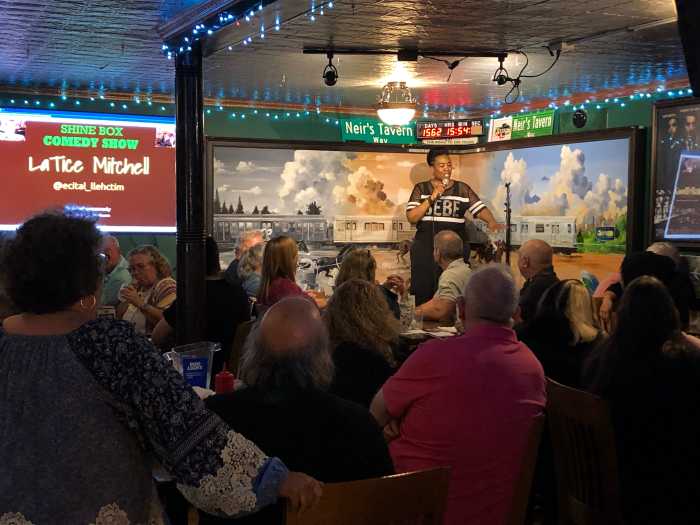
via FourSquare
Oct. 31, 2018 By Laura Hanrahan
Express bus riders in Queens and Brooklyn that commute into Manhattan could save up to 2 hours every week on their trips if congestion pricing were enacted, according to a new analysis by the Riders Alliance, a grassroots group that advocates for public transit.
The group analyzed 39 bus routes in Brooklyn and Queens and found that riders, many of whom spend more than 15 hours commuting each week, could save between 38 minutes and almost 2 hours in their trips if congestion pricing, where cars and trucks would be charged to enter Manhattan below 60th Street, were in effect.
Users of the QM24, for instance, which runs through Glendale, Ridgewood and Middle Village before heading into Manhattan, would save 1 hour and 15 minutes each week, according to the report.
Riders of the QM10, which runs from Rego Park to Manhattan, could also save just over an hour a week under congestion pricing. QM11 commuters, additionally, would save 1 hour and 15 minutes a week in their trips from Forest Hills to Manhattan.
The X64, meanwhile, which starts in Cambria Heights and goes through Forest Hills on its way to downtown Manhattan, would save a total of 1 hour and 52 minutes per week.
“Congestion pricing could mean an extra moment together over breakfast, a little more help with homework or housework, another chapter before bedtime, a longer kiss goodnight,” said Riders Alliance Policy & Communications Director Danny Pearlstein.
The analysis, based on the state’s projection of a 20 percent increase in traffic speeds if congestion pricing were in effect, is the latest move in the contentious, months-long debate in both the city and state over congestion pricing.
In January, Fix NYC, a traffic advisory panel appointed by Governor Andrew Cuomo, released a reported detailing the ways congestion pricing could be implemented in Manhattan.
The report labeled Manhattan below 60th Street as the central business district, and proposed a surcharge for vehicles entering the zone as a way to ease heavy congestion there.
Cars, for instance, would pay $11.52 under the policy, while trucks would pay $25.34. For-hire vehicles would pay $2 to $5 to enter.
The advisory panels said the policy could generate between $810 million and $1.1 billion annually for the state. That money would then be used to fund repairs of the subway’s deteriorating infrastructure.
Despite rallies, a six-figure media campaign, and the support of dozens of businesses and community groups, the congestion pricing proposal remains a hard sell for many of the city’s residents who fear hundreds of dollars in additional car costs each month.
The Riders Alliance, however, says its new findings could sway outer borough residents.
Hanadi Abdelrahman, an X28 rider and John Jay student, says the time saved would help with her already busy schedule.
“Between attending classes, doing homework, and participating in an internship program, my time is extremely limited,” Abdelrahman said, according to the Riders Alliance. “I would love to have some extra time for myself each week instead of spending it waiting at the bus stop or on the X28 stuck in traffic.”
Whether or not the city implements congestion pricing will depend on state officials in Albany voting in favor of the plan and allocating funds to set the program in motion.
Congestion pricing was not included in this year’s budget, released in April.






